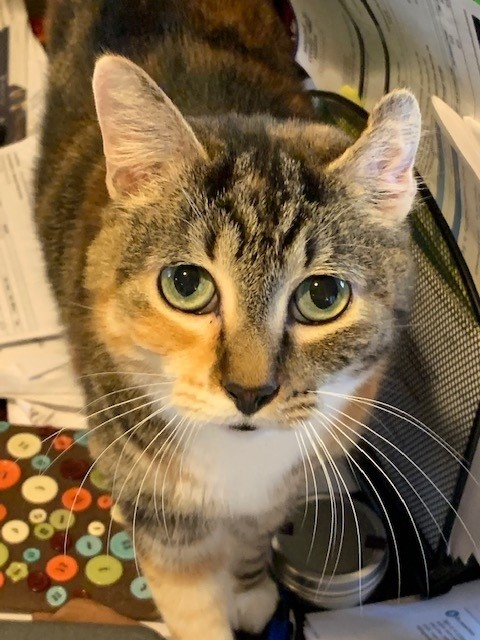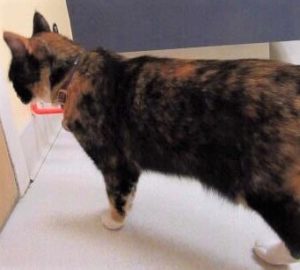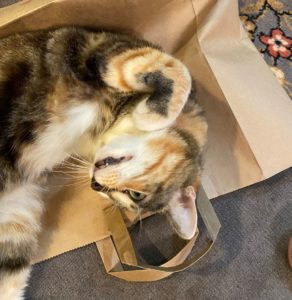
This month we have a very special pet of the month. Manny was recently adopted and brought to Hawthorne Hills Veterinary Hospital for his check-up. The veterinarian looked at him from a distance and immediately stated that we will need to update our records because they state that he is a male, when clearly, he is a female!
Why did the veterinarian think she could tell the sex of a cat by just looking from across the room?
First, we should discuss the definition of calico and tortoiseshell coat colors.
Calico coats have large patches of orange, black and white. Tortoiseshell cats have mottled orange and black colors usually with little or no white.
The stripes that we see on a cat’s coat are also related to the pattern, but not specifically the color. However we can generally see the stripes in a lighter color (orange) but they may be hidden in a darker color (black). Calico and Tortoiseshell cats can also have tabby marks within the colors – this is known as a ‘patched tabby’ pattern; sometimes also referred to as Torbie or Tortoiseshell Tabby. There are different genes that come in to play to determine the pattern of stripes or spots and how they are expressed in a given cat.
Cats’ coat colors are linked to their sex chromosomes (XY). The X chromosome codes for the coat colors – orange/red and black.
Since female cats have two X chromosomes, they can be solid black, solid orange or both black and orange. Males only have one X, so they can be solid black or orange but not both.
The white color is coded separately on a non-sex chromosome.
How can Manny’s coat have black, orange and white since he would need to be genetically XX in order to have both orange and black coat colors? We know XX equals female genitalia so how can Manny be male?
There are three ways that this can happen:
- XXY Male: (known as Klinefelter’s Syndrome in humans). The Y codes for male genitalia, one X codes for black coat color and the other X codes for orange.
- Somatic Mutation: This mutation in the somatic (non-germinal (sperm or egg)) cells in the developing embryo. In the case of coat color, the mutation would be in the skin cells. For example, the original X coded for black coat color and the mutation coded for orange coat color.
- Chimera: This is where two zygotes fuse together. Zygotes are formed just after fusion of the egg and sperm. For example, one zygote had a black coat color and the other an orange.
We would need to do further testing called karyotyping to find out what which type Manny is. Regardless, Manny will live a long and happy life.

 6512 12th Ave NE
6512 12th Ave NE








